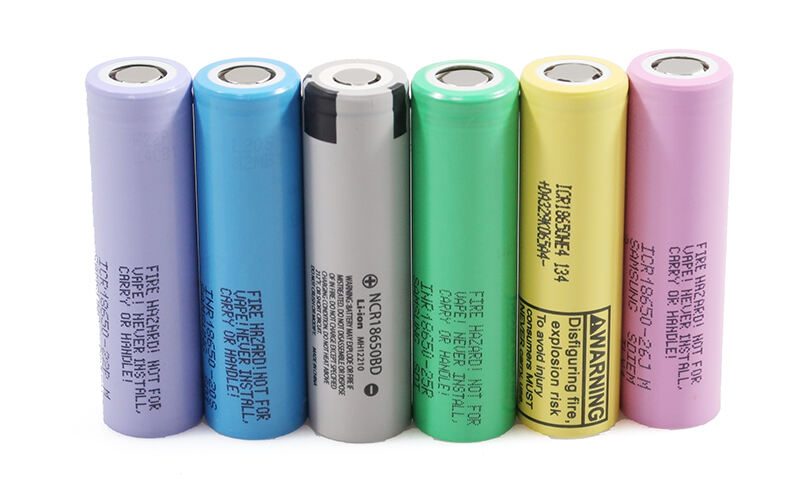News
21700 vs Li-Polymer: Choose the Right Battery for Your Project
Understanding the Core Differences in Battery Architecture
When it comes to batteries, the 21700 cylindrical battery and the lithium polymer battery are two popular choices, but their architectures are quite different. The 21700 battery gets its name from its dimensions, with a diameter of 21 mm and a height of 70 mm, and it has a sturdy metal casing on the outside. This makes it perform excellently in storing a large amount of electrical energy. On the other hand, lithium polymer batteries use pouch cells, which can be made into ultra-thin shapes and even bent, making them extremely practical in certain application scenarios. This structural difference means that if you are working on a project with extremely limited space, such as a small wearable device, the flexible lithium polymer battery may be more suitable. However, if your project requires the battery to withstand a large number of charge and discharge cycles, then the 21700 battery with its robust structure may be a better choice.
Comparison of Energy Density and Capacity
Now, let's explore how much electrical energy these batteries can store and how long they can last. Modern 21700 batteries are quite excellent. With advanced nickel-cobalt-aluminum (NCA) chemical technology, their capacity can reach up to 6800 mAh. This is why it is very suitable for devices that require a large amount of power instantaneously, such as power tools or electric vehicles. However, lithium polymer batteries focus more on being lightweight. Due to their layered electrode structure, each kilogram of lithium polymer battery can provide 10%-15% more watt-hours of electricity. So, as an engineer, you must consider carefully. If your device needs to operate for a long time without being too large in size, you may be inclined to choose a lithium polymer battery. But if you can sacrifice a little size to obtain more power, then the 21700 battery may be a better option.

Thermal Management and Safety Protocols
When dealing with batteries, safety is of utmost importance. The 21700 battery, with its robust design, has built-in pressure relief valves and positive temperature coefficient (PTC) fuses. These devices are like small safety valves that activate during rapid discharge to prevent thermal runaway, which is when the battery overheats dangerously. Lithium polymer batteries have better natural heat dissipation performance due to their flat cell shape. But it does require an additional protection circuit to prevent overcharging. If your project will be used in extreme temperature environments or environments with frequent vibrations, then you must choose a battery with good built-in protection functions. Also, pay attention to batteries with flame-retardant separators, as this can add an extra layer of safety.
Customization Opportunities for Unique Applications
If you are working on a unique project, customization may be crucial. 21700 batteries are very suitable for standardized battery packs. They can be perfectly embedded in pre-designed spaces, and it is also easy to make a battery pack with multiple such batteries. However, in terms of customization, lithium polymer technology is a game-changer. For example, in medical wearable devices or ultra-thin Internet of Things sensors, you may need a battery that can be bent or stacked in a special way. Only the pouch cells of lithium polymer batteries can achieve this. But if you are mass-producing consumer electronics, the modular design of 21700 batteries is more convenient for managing inventory and handling the logistics of replacing parts.
Cost Considerations in the Product Lifecycle
Cost is always an important factor. For 21700 batteries, due to their mass production, there are economies of scale. This means that the cost of a single 21700 battery may be 20%-30% lower than that of an equivalent lithium polymer battery. However, lithium polymer batteries also have their own cost advantages. If you are manufacturing a compact device, a customized-shaped polymer battery can actually reduce the overall system cost. This is because you don't need to add additional casing components to fit the battery. The flexibility of polymer batteries is very practical during the prototyping stage. But when you start to scale up production, switching to standardized 21700 batteries may be more economically reasonable.

Environmental Factors and Regulatory Compliance
In today's world, environmental and regulatory factors are crucial. As long as they are properly certified, both 21700 batteries and lithium polymer batteries can meet international transportation safety standards. The steel casing of 21700 batteries is easier to recycle compared to the polymer pouches. However, new technologies for separating the laminate layers of polymer batteries are improving their sustainability. If your project is targeted at the EU market, you need to ensure that the battery uses electrode materials that comply with the RoHS standards. In addition, having verified cycle life data is also important, as this can indicate the battery's service life under normal use.


